In this guide you will find all you need to know so you can identify the different types of tuba to fit your playing needs. Read on to find out more about this incredible instrument and how the instrument works. Here you can find out how to go about buying a tuba, whether you are a beginner or a more advanced player. Let’s get started with our tuba buyer’s guide!
Types of tuba
The sheer choice of tubas can be overwhelming to begin with. There are many products from different manufacturers, but the core types of instrument remain the same. These instruments are made of brass which is then covered in silver plate, or a lacquer finish.
Contrabass
Contrabass tubas are the largest found in symphony orchestras or large wind ensembles. These evolved as larger cousins of the first tuba of 1835, known as the bass tuba.
Pitched in C or Bb, the tube sizing (‘bore sizes’) are much wider on these instruments compared to the Eb and F ‘bass tuba’. The deep, rich sound has presence and darkness to its tone quality. Music for orchestras often requires notes from the tuba which are very low in pitch. Contrabass tubas can easily provide these.
It is normally played by advanced musicians and professionals due to the precise tuning method needed. It is fine tuned by pushing in and pulling out slides whilst using valves connected to those.
C or Bb
In America and the UK, the C tuba has become a standard instrument in professional ensembles. It features piston valves in its construction. In Europe, the Bb contrabass tuba is found in major orchestras and usually features rotary valves.
You will often find the C tuba called a ‘CC’ tuba and the Bb tuba labelled as ‘BBb’. This is an old-fashioned labelling of the instruments, originally used to help denote the starting pitch of the scale played on each particular tuba.
In modern terms, we understand specific notes by labelling them as they appear on the piano. C1 is the lowest C on a piano, C2 is an octave higher, C3 is an octave higher still.
On a valved brass instrument, an ascending major scale can be played using the following valve pattern:
Open (no valves), 1+3, 1+2, 1, open, 1+2, 2, open.
This scale begins on a CC tuba using C2. Similarly, a BBb contrabass tuba begins this major scale one tone beneath C2. For reference, middle C on a piano is known as C4.
Bass
In brass bands, the tuba goes by the name of ‘Bass’, giving us the Bb and Eb bass. So that people could learn the basics of music reading and change instruments easily within their band, all instruments (apart from the bass trombone, bizarrely) in the brass band read from treble clef.
A brass band usually has two Eb basses, and two Bb basses pitched a perfect fourth lower. The famous musician John Fletcher (1941-1987) used an Eb ‘band’ instrument in U.K. orchestras from the beginning of his career. Professionally in the UK to this day, tubas used are mainly the C tuba and the Eb tuba, known as the Eb Bass in the brass band.
E or F
The Eb tuba is found in the UK in every brass band. In Britain, beginners (especially young tuba players) usually begin playing on a three valve, three quarter or even half size E flat tuba which a band or school may loan you. This instrument is the modern day type of the first tuba.
Usually, student category tubas have three piston valves, with players unable to play all the notes descending from the start of your major scale to the ‘pedal’ note an octave beneath.
Also known as an EEb tuba, the full size version usually has four piston valves. Three played by the right hand and one played lower down by the left hand. This fourth valve adds more tubing, letting the player produce all the notes found between the E flats within the first and second octave on a piano.
F tubas were used in Britain by military euphonium players who at the turn of the twentieth century were hired by orchestras to play the tuba for them. By the 1960s, the Eb tuba was interchangeable between bands (where it was a ‘bass’) and the symphony orchestra where it was simply the tuba.
Across Europe and in America, F tubas remain as the smaller cousin of the contrabass tuba and it is most commonly played in school or community bands. Rotary keys instead of piston valves are usually found on european instruments.
In UK orchestras, the F tuba is making a comeback, with European conductors sometimes asking for this sound if they want to hear what they usually work with. Mainly, the C (also known as the CC) and Eb tuba are the instruments of choice for a tubist in an orchestra or professional ensemble such as a symphonic wind orchestra.
Anatomy of the Tuba
The tuba is effectively a giant trumpet and uses a mouthpiece which connects to the lead (rhyming with ‘feed’) pipe. This lead pipe joins the valves and the tubing passes through, becoming wider before turning into the bell section where the sound emerges.
Tuba Features

Bell
The bell is where the fully formed tuba sound emerges. This takes its name from the bell shape.
Valves
On tubas, the valve type is either piston or rotary and the valve action can be placed on the front of the instrument, or on the top. Front action valves are common on larger tubas which have 4 valves for the right hand and a fifth valve for the right hand thumb, this usually being a rotary valve for the thumb. Rotary valves are usually found on European instruments.
Compensating tubas
Unlike a piano, brass instruments do not have a key for each note. The chromatic scale we play is not always perfectly in tune. For larger professional tubas, extra tubing links between the valves to improve intonation, particularly when playing very low notes. This system works in the same way as a trumpet player using a third valve trigger manually.
Leadpipe
The mouthpiece is the interface connecting the tuba player to their instrument, just like a computer mouse connects us to a desktop computer. The cup shape allows the lips to send focused vibrations into the leadpipe and then into the valves before the pitches emerge from the bell.
Water keys
Brass instruments are made of cold metal. Our breath and the air we send down the instrument as we vibrate our lips covers the interior of the instrument. This condensation (imagine continuously breathing on a window) collects and needs to be released from the tuba otherwise it can sound like an old car struggling to start on a cold day! The water key provides an exit route for water build up.
To release this water, we remove the valve slides and tip the tuba up on end. Most commonly however, we use the water keys by opening them up one by one and blowing a strong stream of air down the tuba to blow out the water.
To keep safe, we do this in rehearsals onto a paper towel and place this in the bin as soon as we can as well as cleaning our space after playing.
Tubas for younger players
Depending on which part of the world you are in (see above regarding tubas found in particular regions), a young player may start off with a three quarter or half size three valve tuba. This will not be able to play very low notes, but as you develop as a musician and grow physically, you will then graduate from one of the student tubas to a larger instrument.
The size of smaller tubas is more varied now and there are even mini tubas and tubas made of plastic! Once you have moved to a larger model of the tuba you started on, you may then progress to a contrabass tuba known as a C tuba or Bb tuba depending on your location.
An excellent choice of tuba for a younger player would be a Student Eb Tuba by Gear4music, or a Besson BE177 Eb, which is available in either Silver Plate or Clear Lacquer.
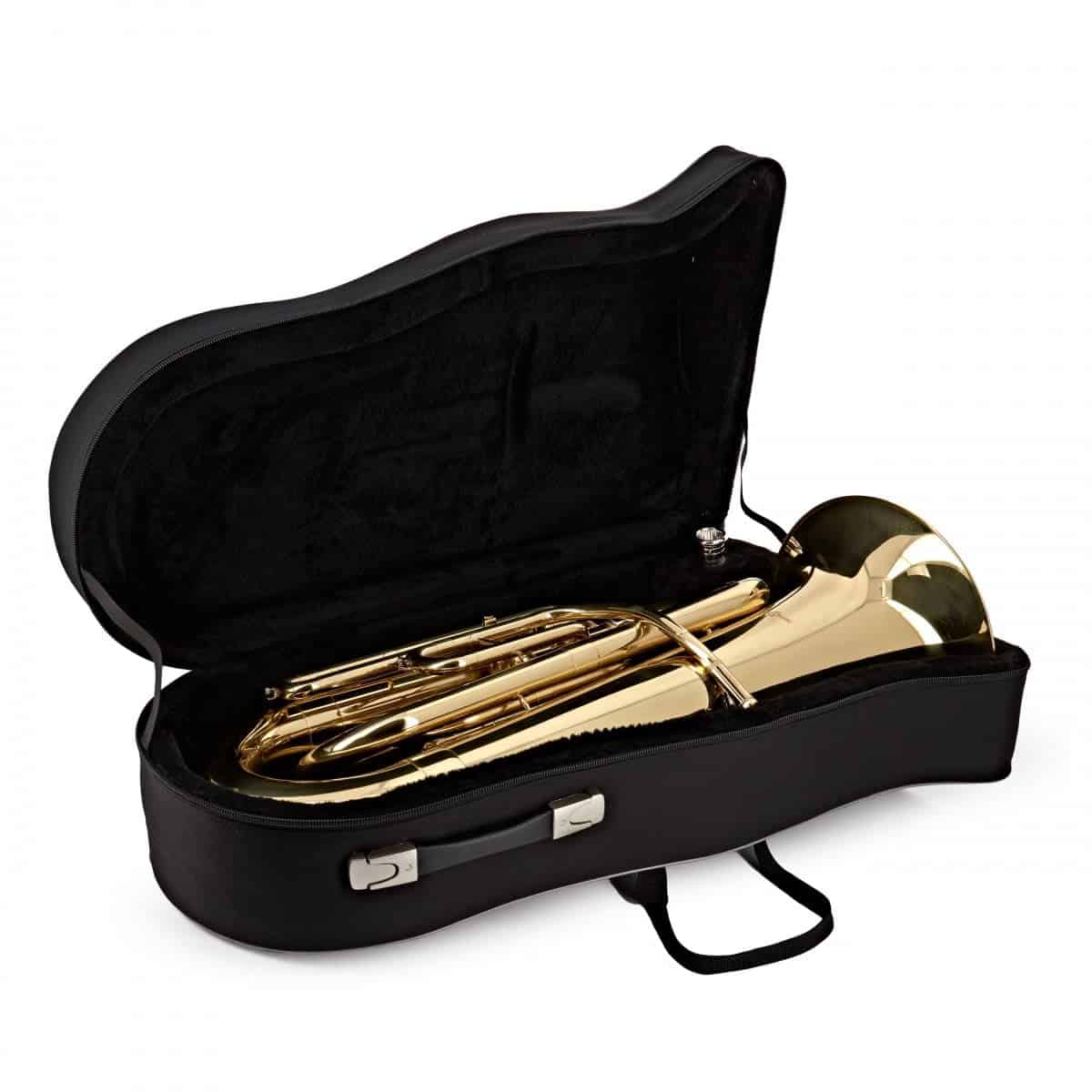
FEATURES: Lacquered Gold Finish
STUDENT Eb TUBA
by Gear4music (TBAEB-100)
When you check the price above, you’ll see there are loads of great places to buy this item. Our personal favorite is Gear4music.
It is the largest music retailer in the UK and fast becoming the most respected online music shop in the US too. Their customer service is excellent, they have competitive prices, really fast shipping, and usually have the longest guarantee.
Most professional musicians use Gear4music, so there is no reason why you shouldn’t too!
- Affordable Price
- Great customer care
- 2 year warranty & 30 day money-back guarantee
- Younger players will eventually outgrow this
The professional musician who wrote this article combined many things,
from the product build, manufacturer’s reputation through to feedback
from other users, to create our famous TedScore™.

FEATURES: Includes mouthpiece and case with wheels<
BESSON BE177 Eb TUBA
When you check the price above, you’ll see there are loads of great places to buy this item. Our personal favorite is Gear4music.
It is the largest music retailer in the UK and fast becoming the most respected online music shop in the US too. Their customer service is excellent, they have competitive prices, really fast shipping, and usually have the longest guarantee.
Most professional musicians use Gear4music, so there is no reason why you shouldn’t too!
- Great build quality
- Proportions and shape of the instrument echo the full size model
- Quite pricey if you're still a beginner
The professional musician who wrote this article combined many things,
from the product build, manufacturer’s reputation through to feedback
from other users, to create our famous TedScore™.
How to care for your tuba
The valves need lubrication with valve oil and the slides need to move to keep the instrument in tune. These lubricants form a barrier between two metal surfaces, reducing heavy friction. This works in the same way as reducing friction between both hands by covering them with soapy water. I recommend this Denis Wick Advanced Formula valve oil.
The finish of the tuba needs different care according to whether it is lacquered with a gold finish, yellow brass, rose brass or nickel silver plated. Various specialist cleaning cloths and polish are available to maintain the tuba lacquer or the specific type of external plating on the instrument.
ACCESSORIES
FOR YOUR TUBA
– Includes Carry Handle and Shoulder Strap
– Lightweight Gig Bag
– Strong & Stable Design<br>
– Extendable Supports for Different Size Instruments
– Anti-evaporation formula
– Can be used in virtually any temperature
– Perfectly in tune across all registers
– Personalise your tone with the adjustable resistor
– Portable & Foldable
– Adjustable & Flexible
The phrase ‘all the gear, no idea’ applies to people who have every single thing money can buy in terms of accessories, musical gadgets, mouthpieces and instruments. Remember that a great sound quality is the most important thing, not what your instrument looks like nor how many things you can place by your stand in your rehearsal.
Having said that, there are some important items you will definitely need which are:
case
Usually a hard, plastic case on wheels is provided with tubas. Older or bigger players may wish to carry the instrument in a soft case (made of fabric or leather) which can be worn on the back. Just be careful not to hurt yourself or ruin your knees transporting a tuba!
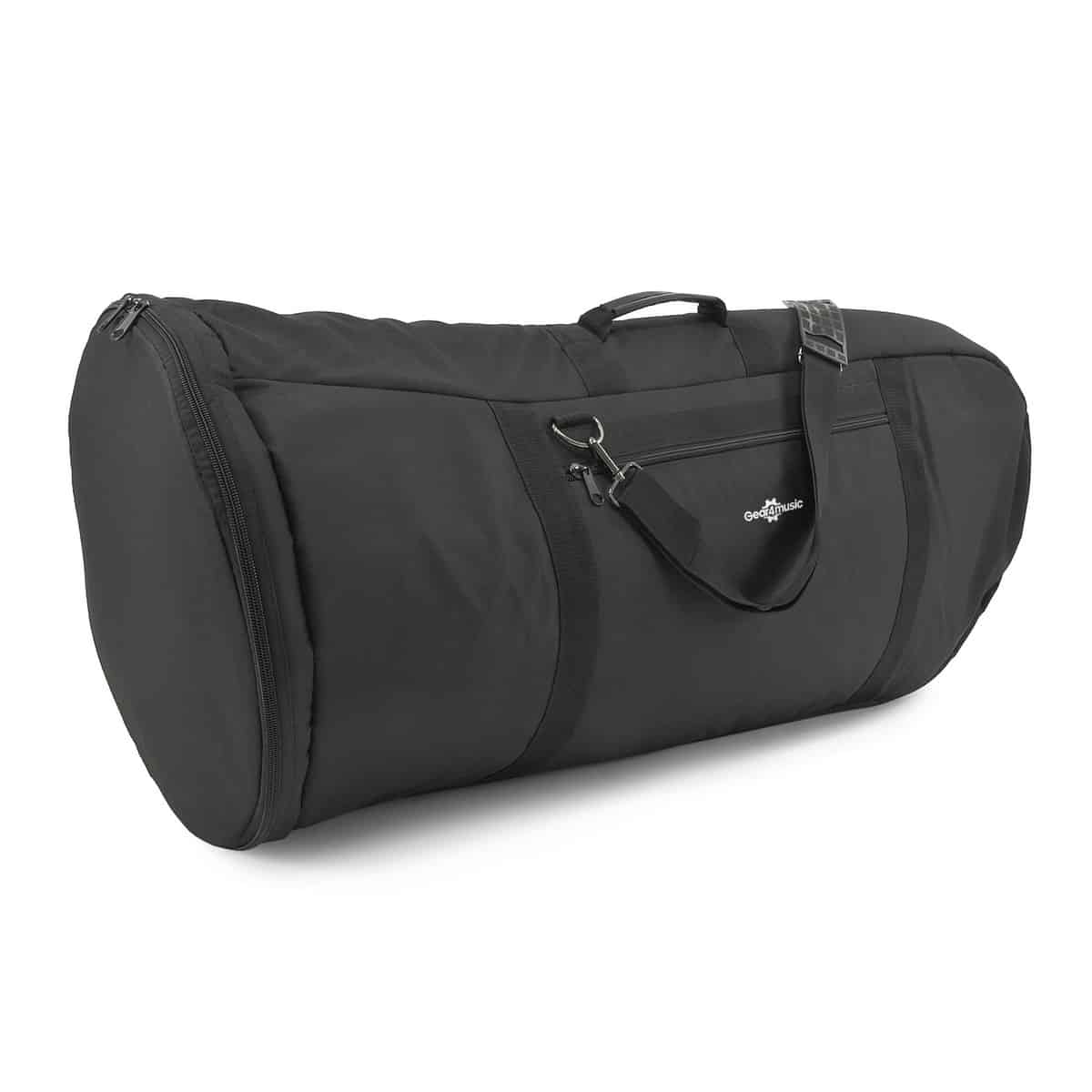
FEATURES: Carry handle, shoulder strap and external pocket for accessories
Tuba Gig Bag by Gear4music
When you check the price above, you’ll see there are loads of great places to buy this item. Our personal favorite is Gear4music.
It is the largest music retailer in the UK and fast becoming the most respected online music shop in the US too. Their customer service is excellent, they have competitive prices, really fast shipping, and usually have the longest guarantee.
Most professional musicians use Gear4music, so there is no reason why you shouldn’t too!
- Much lighter to carry than a hard case
- Low price
- 2 year warranty
- May still be too heavy for children to carry with the instrument inside
- Provides less instrument protection than a hard case
- No wheels, so this case must be carried at all times
The professional musician who wrote this article combined many things,
from the product build, manufacturer’s reputation through to feedback
from other users, to create our famous TedScore™.
Instrument Stand
Although not totally necessary, these can be really helpful if you have back problems or require a safe place to keep your tuba when it is out of the case but not being played.
Hercules Tuba Stand
When you check the price above, you’ll see there are loads of great places to buy this item. Our personal favorite is Gear4music.
It is the largest music retailer in the UK and fast becoming the most respected online music shop in the US too. Their customer service is excellent, they have competitive prices, really fast shipping, and usually have the longest guarantee.
Most professional musicians use Gear4music, so there is no reason why you shouldn’t too!
- Can be used for both Euphoniums and Tubas
- A very strong and stable design
- Extendable supports make this a very versatile product
- A trusted brand
- May not be totally stable when used with the largest tubas
- An extra thing to carry to rehearsals!
The professional musician who wrote this article combined many things,
from the product build, manufacturer’s reputation through to feedback
from other users, to create our famous TedScore™.
Valve oil
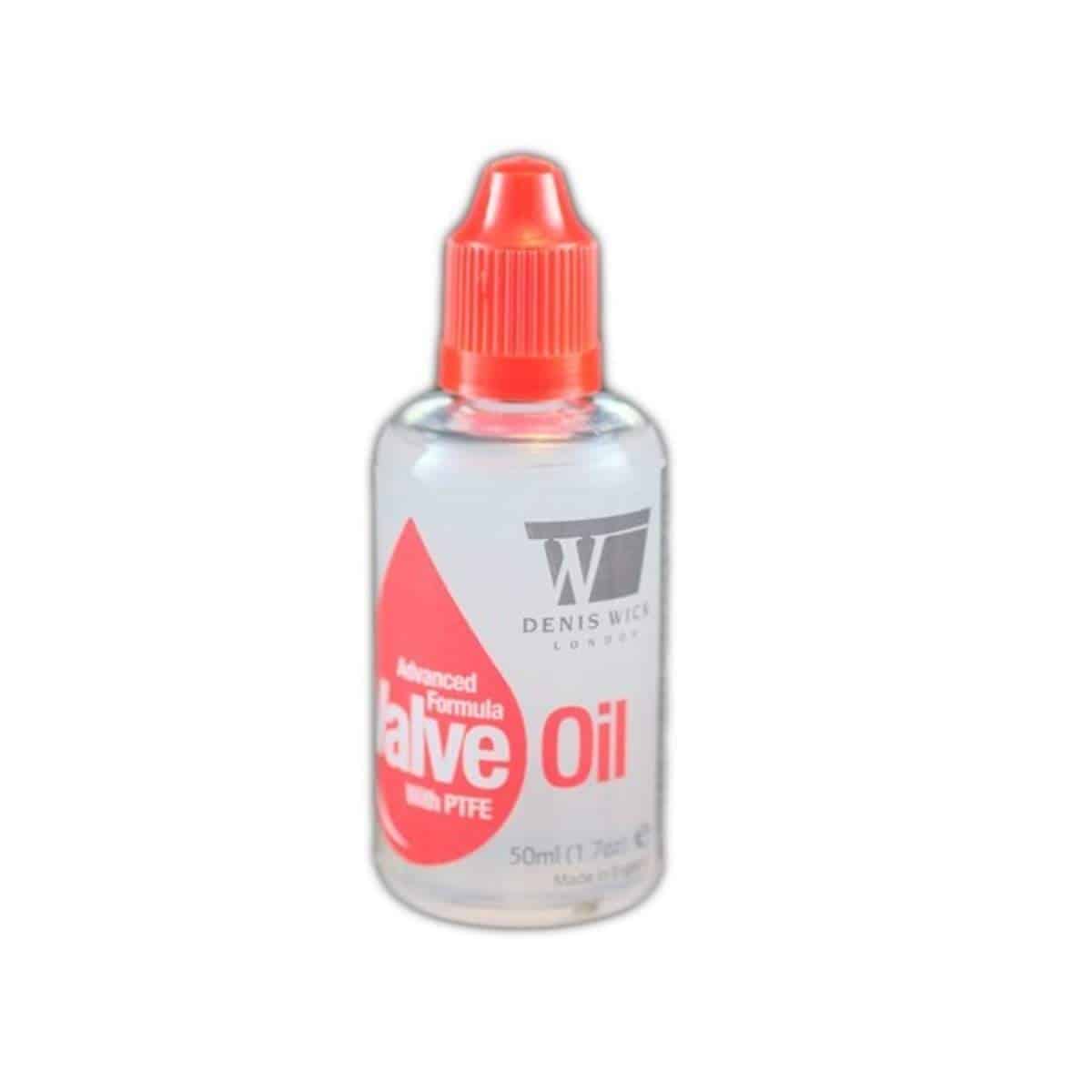
FEATURES: 1 1/4 ounce bottle
Valve Oil by Denis Wick
When you check the price above, you’ll see there are loads of great places to buy this item. Our personal favorite is Gear4music.
It is the largest music retailer in the UK and fast becoming the most respected online music shop in the US too. Their customer service is excellent, they have competitive prices, really fast shipping, and usually have the longest guarantee.
Most professional musicians use Gear4music, so there is no reason why you shouldn’t too!
- Can be used for both Euphoniums and Tubas
- A very strong and stable design
- Extendable supports make this a very versatile product
- A trusted brand
- May not be totally stable when used with the largest tubas
- An extra thing to carry to rehearsals!
The professional musician who wrote this article combined many things,
from the product build, manufacturer’s reputation through to feedback
from other users, to create our famous TedScore™.
Practice mute
If you want to annoy the neighbours, a tuba can be a useful tool to achieve this! If you need to play and worry about creating too much ‘noise’, then you can use a practice mute. This fits into the bell and prevents the normal level of sound leaving the instrument whilst still letting the player hear the pitches they are producing. It pays to be a good person!

FEATURES: Perfectly in tune across all registers
WALLACE Eb TUBA
PRACTICE MUTE
When you check the price above, you’ll see there are loads of great places to buy this item. Our personal favorite is Gear4music.
It is the largest music retailer in the UK and fast becoming the most respected online music shop in the US too. Their customer service is excellent, they have competitive prices, really fast shipping, and usually have the longest guarantee.
Most professional musicians use Gear4music, so there is no reason why you shouldn’t too!
- Trusted brand
- Fits in the bell of the instrument for transport
- Volume reduction is considerable
- The sound produced may be TOO quiet for some players!
- The anodised finish may be easily damaged
The professional musician who wrote this article combined many things,
from the product build, manufacturer’s reputation through to feedback
from other users, to create our famous TedScore™.
Music stand
An obvious accessory, but often children have many to use at school or college, but not one at home. If you play in groups, it would be advisable to get your own lightweight and portable music stand.
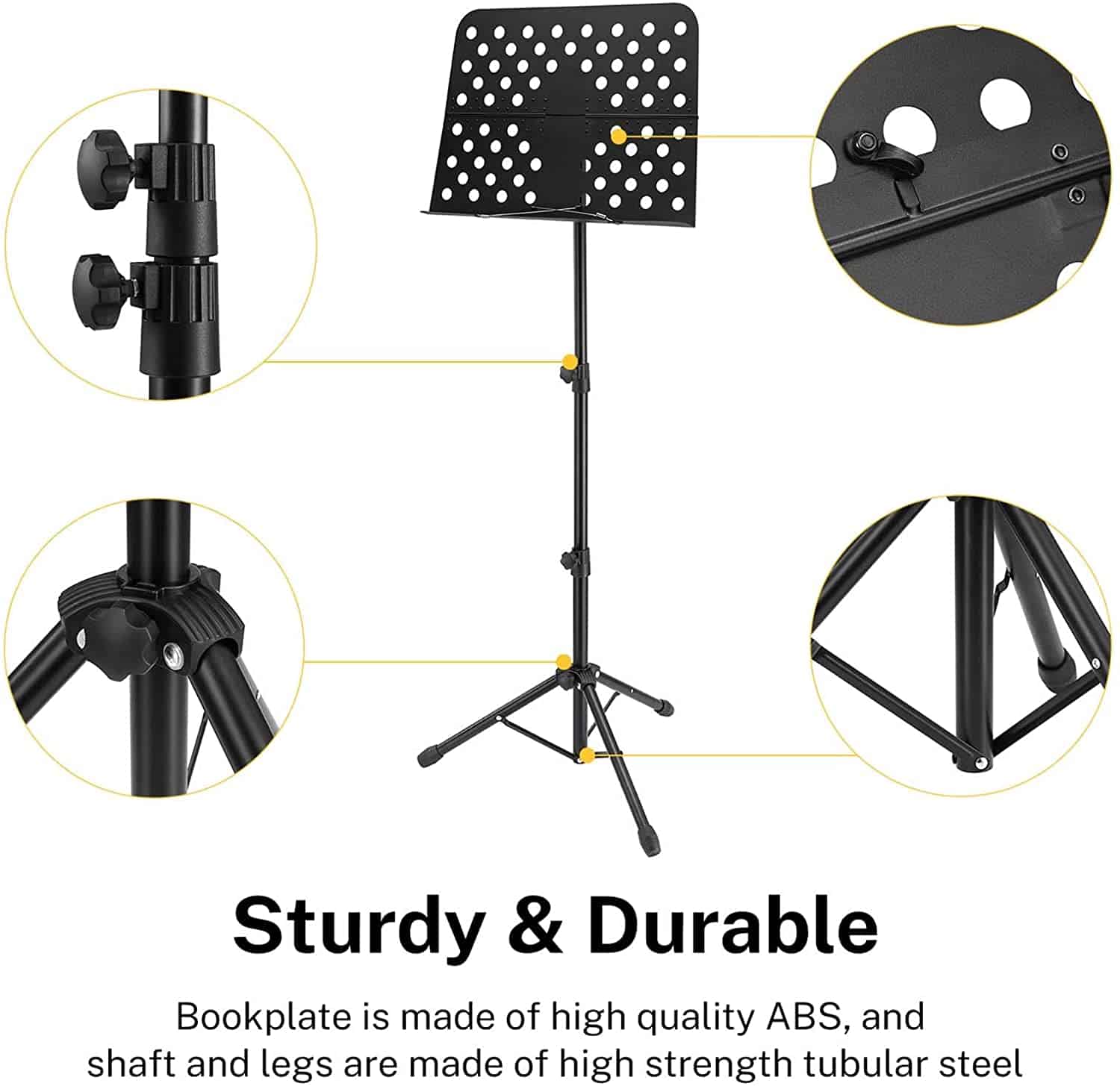
COMES WITH: Basic Kit
FEATURES: Seriously well-made & sturdy
Eastar EMS-1Music Stand
When you check the price above, you’ll see there are loads of great places to buy this item. Our personal favorite is Gear4music.
It is the largest music retailer in the UK and fast becoming the most respected online music shop in the US too. Their customer service is excellent, they have competitive prices, really fast shipping, and usually have the longest guarantee.
Most professional musicians use Gear4music, so there is no reason why you shouldn’t too!
- Amazing complete kit
- Has everything you need
- Strong, yet transportable
- None!
The professional musician who wrote this article combined many things,
from the product build, manufacturer’s reputation through to feedback
from other users, to create our famous TedScore™.
Hire and assisted instrument purchase schemes
Do not be put off the cost of a new tuba. Some music shops allow you to rent an instrument and then buy it whilst deducting rental costs previously paid. If buying an instrument through a state school in the UK, it is possible to do this with the VAT removed.
Tuba buying guide - types of tubas
Summary
The most common tuba in the UK is the piston valve E flat tuba. A child or beginner will need a half or three quarter size instrument. Student tubas and examples can be found in our Tuba Price article.
On a full size version, a compensating system will fine tune lower pitches for you. When progressing to a large wind ensemble or symphony orchestra, you may wish to use a contrabass tuba – usually a C tuba with four piston and one rotary valve or sometimes all rotary valves.
In Europe, the tuba combination is usually F and Bb tuba. In America we find the F and C tubas.
FAQ's
There are four main types of tuba, each with a different key. There’s also the sousaphone, which is often seen in a marching band, but this is a rather different beast!
The C and F in America, Bb and F in Europe, C and Eb in the UK.
The best tuba will always come from a reliable brand, such as Besson.
You are likely to spend a minimum of £1,000 / $1,400 on a good student model, and £8,000 / $11,000 upwards for a full-size professional instrument.
Without using any valves, a Bb tuba plays pitches from the Bb harmonic series and a C tuba plays pitches from the C harmonic series.







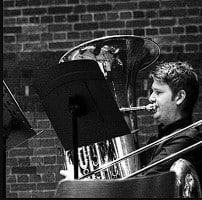







This is the article that made me buy a Tuba, looking forward to using this website alongside my journey.
The tuba is an instrument not many people play, and I’m glad you are Arthur! If you want a beginner’s guide, click here…